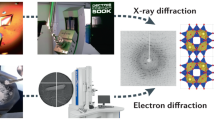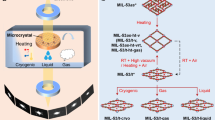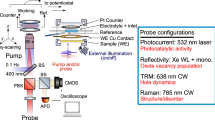Abstract
THE electron microscope can be used to investigate the morphological features of a specimen right down to the molecular level, but there is as yet no way of identifying the chemical nature of the substances seen, except on the rare occasions when these happen to be crystalline. In a specimen of uniform thickness, a region of high electron opacity may, in general, be said to be one containing substances of a greater weight density than those of the surrounding less opaque region1, but this gives little help in deciding on their chemical composition. The lack of any direct way of knowing what substances one is looking at is perhaps the most serious shortcoming of electron microscopy.
This is a preview of subscription content, access via your institution
Access options
Subscribe to this journal
Receive 51 print issues and online access
$199.00 per year
only $3.90 per issue
Buy this article
- Purchase on SpringerLink
- Instant access to full article PDF
Prices may be subject to local taxes which are calculated during checkout
Similar content being viewed by others
References
Valentine, R. C., Nature, 181, 832 (1958).
Lenz, F., Z. Naturforsch., 9a, 185 (1954).
Sadhukhan, P., J. App. Phys., 29, 1235 (1958).
Hall, C. E., and Inoue, T., J. App. Phys., 28, 1346 (1957).
Author information
Authors and Affiliations
Rights and permissions
About this article
Cite this article
VALENTINE, R. The Possibility of distinguishing between Substances shown on Electron Micrographs. Nature 183, 761 (1959). https://doi.org/10.1038/183761a0
Issue date:
DOI: https://doi.org/10.1038/183761a0



